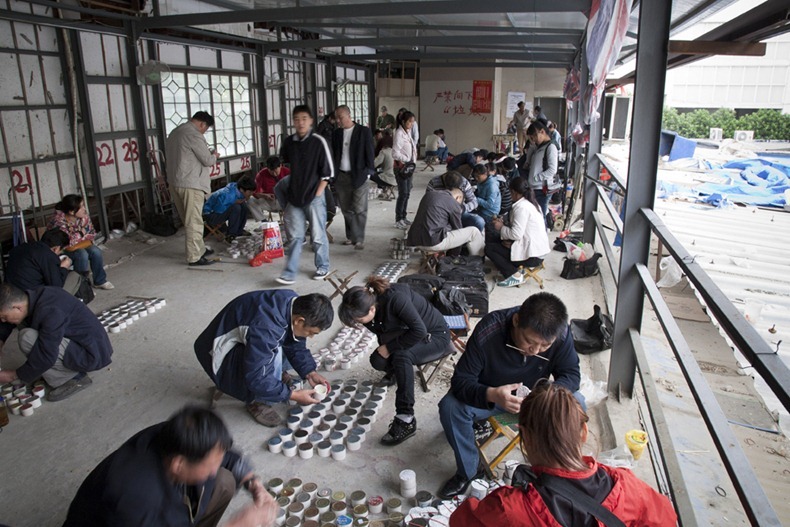Cricket fighting is a form of amusement popular in many areas in China. It was nurtured by Tang Dynasty emperors more than 1,000 years ago and later popularized by the commoners. During the Tang dynasty (618 – 906 A.D.), people started to keep crickets in cages and enjoy their songs while in captivity. Under the Song dynasty (960 – 1278 A.D.), cricket fighting flourished as a popular sport. In the 13th century, the Southern Song Dynasty prime minister Jia Sidao even wrote a how-to guide for the blood sport. Jia's obsession with cricket fighting is believed to have contributed to the fall of the empire. During the Cultural Revolution (1966-1976) China's Communist government banned cricket fighting as a bourgeois predilection, but it is now undergoing a revival among a younger generation eager to embrace genuinely Chinese pastimes.
During the fall in big cities like Shanghai, pet markets are crowded with cricket enthusiasts. They huddle over suppliers from the countryside, haggling as they lift lids on soup-can-size cylinders to inspect each occupant's legs and jaws. Buyers often buy two crickets and make them fight, keeping the winning one for contests.
Crickets from Shandong province, particularly those from Ningjin County, are most prized. The cricket bred in Ningjin County is big in head, neck and legs with fine color of skin. Meanwhile, they are born with indomitable will to fight and strong power of endurance, ferocity, toughness and unyieldingness. Ningjin County had provided crickets as tribute to emperors during the past dynasties in ancient China.
The crickets sell from $2 to $50 each, but exceptionally aggressive crickets can fetch much more. You will get an idea of the volume of this market when I tell you that more than 400 million yuan (US$63 million) were spent in China on crickets, in 2010.
Two male crickets are put into the plastic fighting container during the tournament in Qibao Ancient Town. To coax them to fight, the owners brush them with straw sticks until they become aggressive, baring their jaws, and engaging one another.
A participant holds a losing cricket outside the Xilai Ranch at the "Yu Sheng Cup" cricket-fighting tournament in Luhua on Chongming Island. Held during China's week-long national holiday and organized by the Chongming Tourist Department and local government, a total of 16 groups participated. While betting on the games is illegal, the winning team was awarded a certificate and 10,000RMB ($1,500 USD).

A judge keeps an eye on the score and time as the fight commences.
Inside the competition room, a judge and participants watch the match. It is held in a quiet room so as not to distract the fighting crickets.
Competitors and guests watch the tournament at Xilai Ranch where the fights are projected onto a big screen for everyone to see.
Cricket fighting has long been a means of gambling, which is strictly forbidden in China. It is not uncommon for cricket-fighting dens to be raided by police. But on a street in the old part of Shanghai, people congregrate and let their insects duke it out. Money quickly exchanges hands and tempers flare.

























Comments
Post a Comment